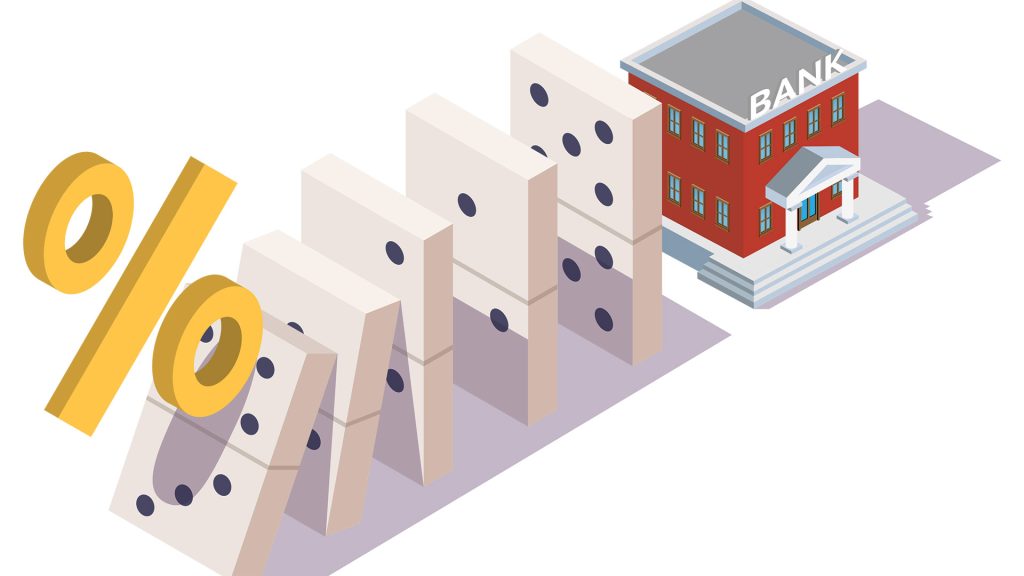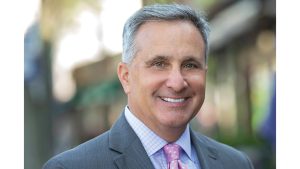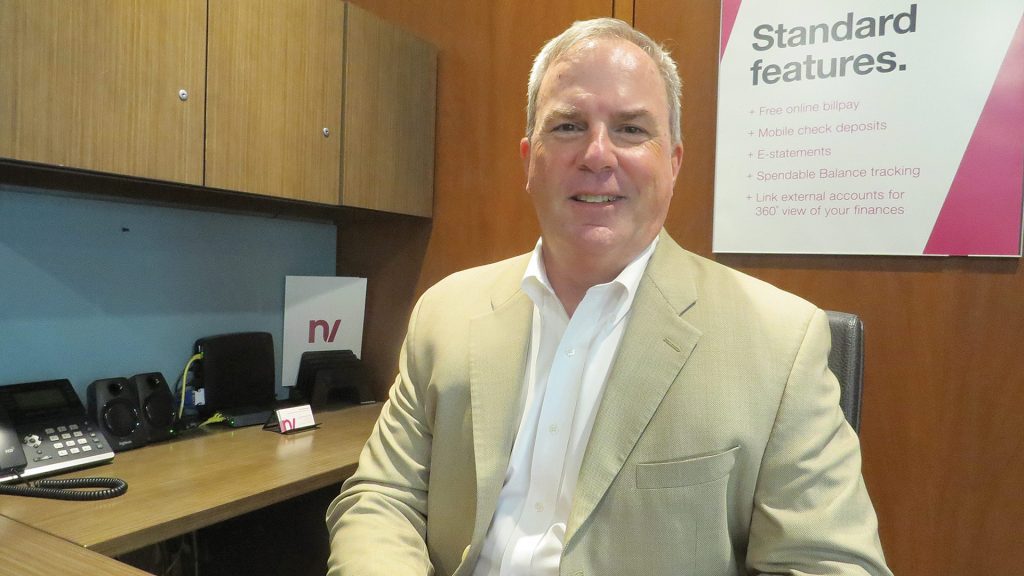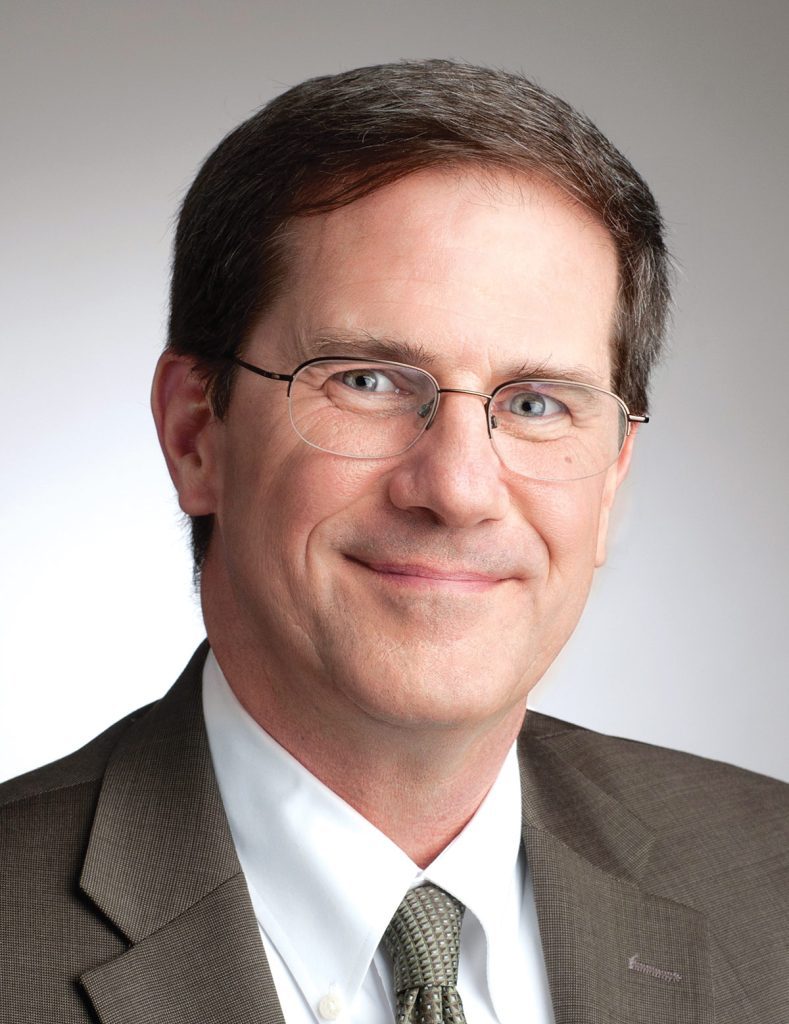
Banks Fight Upstream from Domino Effect of Higher Interest Rates
An Uphill Climb

Dan Moriarty was among the participants in the recent IRONMAN competition that wound its way through many Western Mass. communities.
The president and CEO of Monson Savings bank, Moriarty is also an avid biker, and decided to take things up a notch — or two, or three — with the IRONMAN, which featured a mile swim, downstream, in the Connecticut River; a 56-mile bike trek; and a half-marathon (13 miles and change).
Moriarty said his time — and he doesn’t like to talk about time — was roughly seven hours, and joked that that he believes he met what was his primary goal: “I wanted to come in first among all the local bank presidents.”
As things are turning out, the IRONMAN isn’t the only test of endurance he will face this year and next (yes, he’s already scheduled to take part again in 2024). He and all other banking leaders are facing another stern challenge, and where they finish on this one … well, there are several factors that will ultimately determine that, as we’ll see.
Indeed, the past year or so has been a long, mostly uphill, upstream stretch for banks, which are being severely tested by unprecedented interest rates hikes implemented by the Fed, which have a domino effect on banks — and their customers. For banks, these moves are squeezing margins that were already tight, with some margins off 50 basis points or more from last year. And for public banks, their stocks have, for the most part, been hammered.
This domino effect involves everything from the huge increase in interest paid to customers on their deposits to the manner in which those interest-rate hikes have brought the home-mortgage business to a virtual standstill.
To quantify that increase in interest paid to consumers, Tom Senecal, president and CEO of PeoplesBank, recalled a quote he read from the president of a large national bank that put things in their proper perspective.
“I won’t even call this a short-term problem anymore when it comes to profitability. It’s a medium-term problem that we’re all having to adjust to.”
“He said, ‘my raw-material costs have increased 600%,’” Senecal noted. “His raw materials are the funding for deposits for his wholesale assets, which have literally gone up 600%. If you look at any business and their profit margins — our raw materials have gone up 600%, so that squeezes our margins.”
Meanwhile, with interest rates more than double what they were a year or so ago, the refi market has obviously disappeared, said Kevin O’Connor, executive vice president of Westfield Bank, adding that, with home sales, those who might be thinking about trading up wouldn’t want to trade a 2% or 3% mortgage for one closer to 7% mortgage, so they’re taking what could be called a pause.
As is the Fed, which is taking a close look at the impact of its interest-rate hikes before deciding what to do next, although most experts expect at least one more rate hike this year.
And that will keep banks on this current treadmill, said Jeff Sullivan, president and CEO of Springfield-based New Valley Bank, adding that, while there has been talk that rates might start coming down this year, that likely won’t happen until at least early next year.
By then, the country may well be in recession, adding new levels of intrigue, said Moriarty, noting that the yield curve is currently inverted, a historically accurate predictor of recession.
“We’re going to eventually get into a recession in the third or fourth quarter of this year,” he said. “We were anticipating it might happen a little earlier with hopes that the Fed would have cut rates before of 2023, but now, we’re guessing that interest rates are going to be elevated another year out until they start cutting.”

Tom Senecal says unprecedented interest-rate hikes have put a great deal of pressure on banks large and small.
Overall, banks’ fortunes are tied, ironically enough, to how well the economy is doing, and they are in the unusual position of hoping that things cool off a little, said O’Connor, adding that, like the Fed itself, banks don’t want to see efforts to curb inflation throw the economy into reverse.
The biggest question, among many others, concerns when the pendulum might start swinging in the other direction and things will improve for banks. There is no consensus there — not with the economy still doing well, a presidential election looming in 2024, and other factors.
But the general feeling is that the uphill portion of this trek won’t be over soon.
“I won’t even call this a short-term problem anymore when it comes to profitability,” Sullivan said. “It’s a medium-term problem that we’re all having to adjust to.”
Moriarty agreed, noting that, while the first two quarters of 2023 has been a difficult year for most banks, the rest of this year and 2024 might be an even more of an uphill climb.
Points of Interest
Senecal told BusinessWest that, as he was heading home for the first weekend in March, he planned to take a break from his phone and spend a few days unplugged.
And he did … until news broke that Silicon Valley Bank (SVB) in California had failed after a bank run on its deposits.
So he started looking at his phone again. And he kept looking at it.
“The weekend that SVB failed, the four largest banks in the country took in roughly $140 billion in new deposits, and community banks, in general, lost $130 million in deposits. There was a huge move to larger institutions out of fear.”
Indeed, there were many discussions with other leaders of the bank about how to communicate with customers and convince them that their deposits were safe.
“That whole weekend, myself and our commercial team and our retail people were on the phone explaining what was going on, answering their questions, and putting their minds at ease,” he recalled. “And I talked to a number of my competitors, and they were doing the same thing.”
Such discussions were necessary, he said, because even though those deposits were becoming far more burdensome, cost-wise, as he noted earlier, all banks need them to have the money to grow their loans, and consumers were getting skittish.

Despite the interest-rate hikes, the economy is still humming in many respects, Jeff Sullivan says, meaning the Fed may still have some work to do to slow it down.
“The weekend that SVB failed, the four largest banks in the country took in roughly $140 billion in new deposits, and community banks, in general, lost $130 million in deposits,” he said, citing a combination of concern fueled by social media and the ease with which consumers can now move money electronically as the dominant causes. “There was a huge move to larger institutions out of fear.”
Overall, there was less fallout in this region, said O’Connor, another of those banking leaders who was the phone to customers assuring them that their assets were safe, adding that the failure of SVB and a few other banks this spring, and the resulting fallout from depositors, were just one of the many speedbumps encountered by banks in 2023.
Indeed, this was a year the industry knew would be challenging — or more challenging — going in, especially with regard to rising interest rates. Just not this challenging.
“Just a year ago, rates were quite low, and everyone thought rates were going up a point and a half, maybe 2%, something in that ballpark — that was the consensus prior to August of last year, when Chairman [Jerome] Powell said, ‘no, we’re really going to stomp on the brakes,’” Sullivan said. “Up to that point, we thought that rates would go up slightly, and we were modeling our projections on that; I don’t think there’s anyone who projected that rates would go up 5% in seven months — that’s unprecedented territory, and that’s what is causing the squeeze.”
O’Connor agreed. A year or so, banks were paying maybe a half-percent interest on deposits, he recalled, adding that most new CD products being advertised are featuring rates in the 4.5% to 4.9% range on the higher end, while rates on money-market accounts are coming up as well, numbers that reflect both the need to garner new deposits and growing competion for those assets.
“You have competition from other banks, internet-only banks, the security brokers — everyone is clamoring for those deposits,” O’Connor said. “And that certainly puts pressure on all banks, including community banks.”
Institutions are adjusting to this landscape, said those we spoke with, but it’s going to take some time to fully adjust because the rate hikes came so quickly and profoundly.
And such adjustments take several forms, they said, including efforts to trade fixed-rate assets for variable-rate assets, initiatives that take time and come with their own set of risks — indeed, rates could, that’s could, go down quickly.

Dan Moriarty says many ominous signs point toward a recession, which could bring more challenges for banks and their customers.
On the mortgage side of the equation, there aren’t many options. Senecal said PeoplesBank has been working to acquire mortgages written in areas that are still relatively hot, such as Cape Cod. Meanwhile, O’Connor said Westfield Bank and institutions like it are pushing home-equity loans, and there is a good market for them as homeowners look to take that equity and put it back into their homes or make other large purchases.
“It certainly doesn’t make up for what we’re losing in mortgages and refis, but it does help,” O’Connor said. “We’re seeing a lot of interest in home-equity loans.”
No Margin for Error
While banks cope with the present, there is just as much discussion, if not more, concerning what will happen next and when conditions will improve for this sector.
And most of that discussion obviously involves the Fed and what will happen with interest rates, because it’s these rates that determine what happens with all those dominoes.
There is some general uncertainty about what the Fed will do, said those we spoke with, because the jury is still out, in some respects and at least in some quarters, on whether it has accomplished its mission when it comes to slowing down the economy and curbing inflation. This uncertainty led to intense discussion at the most recent Fed board meeting, Senecal said.
“There are two schools of thought on this. One is, ‘let’s wait and see what our rate increases are doing to the economy, because it’s like steering a battleship — it doesn’t happen right away,’” he told BusinessWest. “So the Fed took this pause trying to gauge what happened, and what happened? Inflation came down little bit; it was up to 6 or 7%, and now it’s 3.5% or 4%. But their goal is to get it to 2%. So do they continue to raise rates and wait to pause, or do they raise and do a long pause to see if inflation comes down to their target level of 2%?”
“I don’t think there’s anyone who projected that rates would go up 5% in seven months — that’s unprecedented territory, and that’s what is causing the squeeze.”
While inflation slowed in June — the consumer price index rose 0.2% last month and was up 3% from a year ago, the lowest level since March 2021 — core inflation is still running well above the Fed’s 2% target. And Moriarty is among those saying there is ample evidence that the Fed still has work to do to slow the economy and further decrease inflation.
“Employment numbers are surging, and that’s an indication the economy is still moving fast and hot,” he said. “My uneducated crystal ball is telling me we might see a few more interest-rate moves, which means it’s going to be more difficult for the economy to continue on this path.”
Many are saying that the probable course will be another rate increase and then that pause, he went on, adding that there is more conjecture about what will then happen. Will rates stay where they are, or will they start to come down and perhaps reverse the trends seen over the past year or so?

Kevin O’Connor says rising interest rates have slowed the mortgage business — and destroyed the refi business.
“The consensus is that the economy is starting to slow down — not quickly, but it’s starting to slow down — and that rate cuts will probably start to happen in 2024 because inflation and economic growth both show signs of slowing down,” Sullivan said. “When that happens, we can start to price the deposit costs down.
“We’re probably not going back to where we were before,” he went on, meaning rates near zero. “We’re going back to normal, or what could be a new normal — deposit rates in the 3% range. They’re not going to be zero, and they’re not going to be 5%; they’re probably going to be somewhere in the middle once all this settles out.”
When things will settle down is another question that is difficult to answer because the economy is still chugging along, and, with the notable exception of the mortgage market, consumers are still borrowing money.
“Borrowers have gotten used to paying loan rates in the 6s and 7s — they’re not happy about it, but it doesn’t seem to be stopping anyone’s appetite for acquiring assets and borrowing money,” Sullivan said. “There’s still plenty of business out there, and that would support what Powell has been saying — that they haven’t really slowed the economy yet; in fact, it’s pretty darned good. We’re taking applications every day, and we’re writing loans every day; we’re running our business as usual.”
Taking Account
Well … not quite usual at most institutions, especially with regard to mortgages and refis, a huge part of the success formula for the region’s community banks and credit unions.
In this environment, O’Connor said, Westfield Bank and institutions like it are putting even more emphasis on customer service, attracting new customers and retaining existing customers.
“We have to make sure that we’re the bank of choice and remain that,” he said. “We work hard at the commercial relationships, the consumer relationships … our branch teams, our cash-management teams, our lenders, everyone is out there being very available to our customers and working hard to attract new customers from other banks.”
Banks are always working hard on attracting and retaining customers, he said in conclusion, but this year, and in this climate, there is even more emphasis on such initiatives.
It’s all part of a broad response to something that is a little more than your typical economic cycle. It’s somewhat unprecedented, in fact … and certainly a long, uphill climb for most banks.




